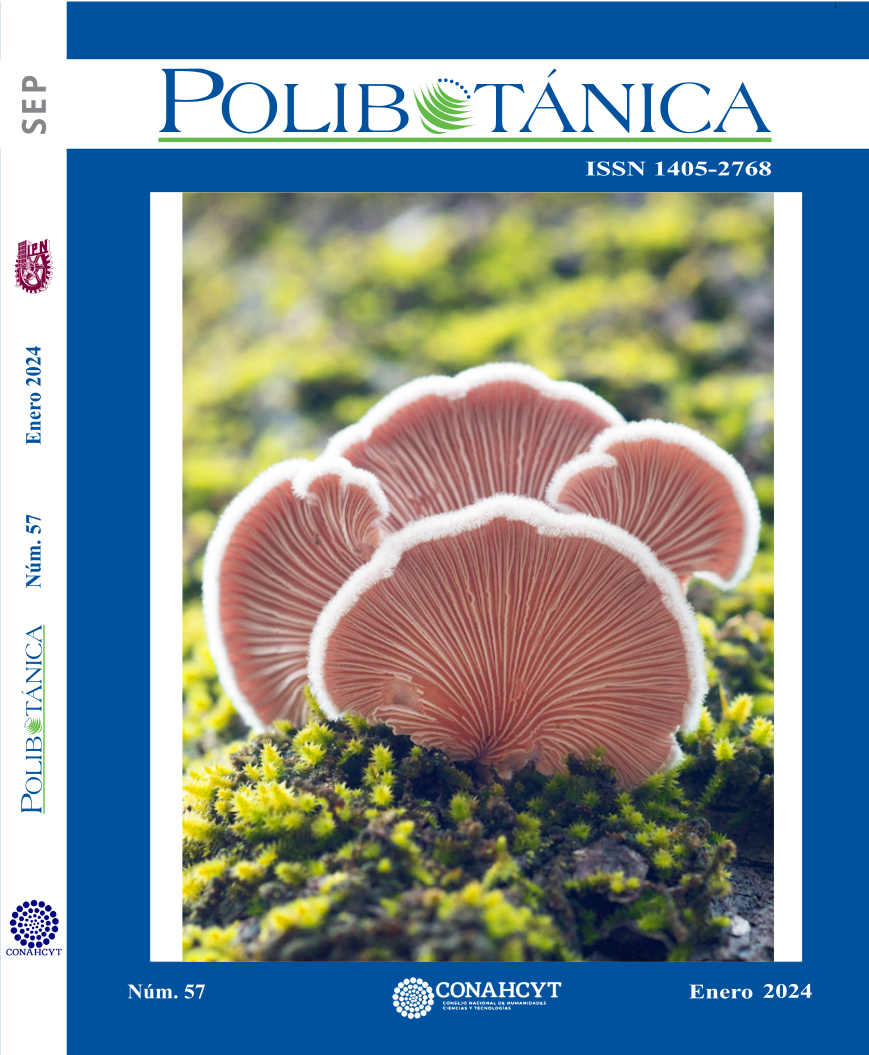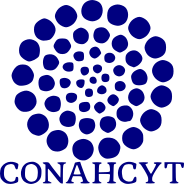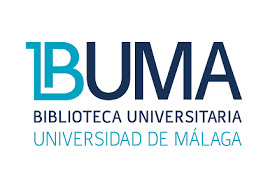El silicio induce respuestas positivas a nivel bioquímico y de expresión de genes en plantas de tomate inoculadas con Fusarium oxysporum
DOI:
https://doi.org/10.18387/polibotanica.57.13Palabras clave:
actividad enzimática, compuestos antioxidantes, estrés biótico, expresión de genes de defensa, fitohormonasResumen
Las plantas de tomate infestadas por Fusarium oxysporum (Fol) muestran limitaciones en rendimiento y calidad de frutos. La aplicación de ácido silícico podría ser una alternativa para mitigar los daños causados por este patógeno. En este trabajo se estudió el efecto del ácido silícico en plantas de tomate variedad “Rio Grande” inoculadas con Fol. Se aplicó ácido silícico vía foliar semanalmente en plantas de tomate (diez aplicaciones). Los tratamientos consistieron en ácido silícico + Fol, ácido silícico, Fol y un control absoluto. Se determinó la incidencia y severidad de la marchitez de Fol, el contenido de compuestos antioxidantes (licopeno, β caroteno, clorofilas, vitamina C, glutatión reducido, fenoles, flavonoides, antioxidantes totales y proteínas), actividad enzimática (APX, CAT, GPX y SOD), PAL, ácido salicílico y jasmónico, y la expresión de genes que participan en la síntesis de PR1, JA, GAME1, PAL5-3, ET y ABA. En las plantas tratadas con ASi+Fol, en comparación con las plantas inoculadas con Fol, se redujo la incidencia de la enfermedad en un 32% y la severidad en un 22%. También presentaron un incremento de clorofila a, b y total (49.1, 59.4 y 46.7%, respectivamente), así como de flavonoides (24.6%), las plantas sobreexpresaron los genes que participan en la síntesis de PR1, JA, GAME1, PAL5-3, ET y ABA, a los 31 ddt, indujeron una reducción de glutatión reducido, capacidad antioxidante por DPPH, CAT, ácido jasmónico y la expresión de todos los genes evaluados en este trabajo a los 73 ddt. Las plantas tratadas con ASi, en comparación con Fol, presentaron un incremento de proteínas, licopeno, vitamina C (30.3, 65.0, 52.7%, respectivamente), clorofilas y la expresión de PAL5-3 (31 ddt), GAME1 y ET (73 ddt). En el caso de Fol, se apreció mayor concentración de vitamina C, fenoles, DPPH, PAL, CAT, GPX, ácido salicílico y jasmónico, y ligeramente un incremento de la expresión de JA, GAME1, PAL5-3 y ABA (73 ddt), pero también indujo una reducción en la concentración de flavonoides, clorofilas y la expresión de los seis genes determinados en este trabajo a 31 ddt. Por su parte las plantas T0, comparado con Fol, se observó aumento de proteínas, licopeno, flavonoides (33.1, 62.0, 27.8%, respectivamente), así como clorofilas, y la expresión de todos los genes analizados a los 31 ddt, a excepción de ET. La aplicación foliar de ácido silícico disminuyó los efectos negativos causados por Fol a través del aumento de compuestos antioxidantes y cambios en la expresión de los genes relacionados con el sistema de defensa en plantas de tomate.
Referencias
Anstead, J., Samuel, P., Song, N., Wu, C., Thompson, G. A., & Goggin, F. (2010). Activation of ethylene-related genes in response to aphid feeding on resistant and susceptible melon and tomato plants. Entomologia Experimentalis et Applicata, 134(2), 170–181. https://doi.org/10.1111/j.1570-7458.2009.00945.x
Arvouet-Grand, A., Vennat, B., Pourrat, A., & Legret, P. (1994). Standardization of propolis extract and identification of principal constituents. Journal de Pharmacie de Belgique, 49(6), 462–468.
Aybeke, M. (2017). Fusarium infection causes genotoxic disorders and antioxidant-based damages in Orobanche spp. Microbiological Research, 201, 46–51. https://doi.org/10.1016/j.micres.2017.05.001
Babalar, M., Edrisi, B., & Naderi, R. (2016). Evaluation of the Mechanical Strength of Gerbera Flower Stem in Response to Silicon and Salicylic Acid Application. Journal of Ornamental Plants, 6(3), 163–171.
Bakhat, H. F., Bibi, N., Zia, Z., Abbas, S., Hammad, H. M., Fahad, S., Ashraf, M. R., Shah, G. M., Rabbani, F., & Saeed, S. (2018). Silicon mitigates biotic stresses in crop plants: A review. Crop Protection, 104, 21–34. https://doi.org/10.1016/j.cropro.2017.10.008
Bathoova, M., Švubová, R., Bokor, B., Neděla, V., Tihlaříková, E., & Martinka, M. (2021). Silicon triggers sorghum root enzyme activities and inhibits the root cell colonization by Alternaria alternata. Planta 2021 253:2, 253(2), 1–14. https://doi.org/10.1007/S00425-020-03560-6
Benhamou, N., & Bélanger, R. R. (1998). Benzothiadiazole-mediated induced resistance to fusarium oxysporum f. sp. radicis-lycopersici in tomato. Plant Physiology, 118(4), 1203–1212. https://doi.org/10.1104/pp.118.4.1203
Bhatt, D., & Sharma, G. (2018). Role of silicon in counteracting abiotic and biotic plant stresses. International Journal of Chemical Studies, 6(2), 1434–1442.
Bradford, M. M. (1976). A rapid and sensitive method for the quantitation of microgram quantities of protein utilizing the principle of protein-dye binding. Analytical Biochemistry, 72(1–2), 248–254. https://doi.org/10.1016/0003-2697(76)90527-3
Brand-Williams, W., Cuvelier, M. E., & Berset, C. (1995). Use of a free radical method to evaluate antioxidant activity. LWT - Food Science and Technology, 28(1), 25–30. https://doi.org/10.1016/S0023-6438(95)80008-5
Brunings, A. M., Datnoff, L. E., Ma, J. F., Mitani, N., Nagamura, Y., Rathinasabapathi, B., & Kirst, M. (2009). Differential gene expression of rice in response to silicon and rice blast fungus Magnaporthe oryzae. Annals of Applied Biology, 155(2), 161–170. https://doi.org/10.1111/j.1744-7348.2009.00347.x
Cai, K., Gao, D., Chen, J., & Luo, S. (2009). Probing the mechanisms of silicon-mediated pathogen resistance. Plant Signaling and Behavior, 4(1), 1–3. https://doi.org/10.4161/psb.4.1.7280
Cao, B. li, Wang, L., Gao, S., Xia, J., & Xu, K. (2017). Silicon-mediated changes in radial hydraulic conductivity and cell wall stability are involved in silicon-induced drought resistance in tomato. Protoplasma, 254(6), 2295–2304. https://doi.org/10.1007/s00709-017-1115-y
Carré-Missio, V., Rodrigues, F. A., Schurt, D. A., Resende, R. S., Souza, N. F. A., Rezende, D. C., Moreira, W. R., & Zambolim, L. (2014). Effect of foliar-applied potassium silicate on coffee leaf infection by Hemileia vastatrix. Annals of Applied Biology, 164(3), 396–403. https://doi.org/10.1111/aab.12109
Cruz, M. F. A., Debona, D., Rios, J. A., Barros, E. G., & Rodrigues, F. A. (2015). Potentiation of defense-related gene expression by silicon increases wheat resistance to leaf blast. Tropical Plant Pathology, 40(6), 394–400. https://doi.org/10.1007/s40858-015-0051-7
Cui, X., Tao, X., Xie, Y., Fauquet, C. M., & Zhou, X. (2004). A DNA Associated with Tomato Yellow Leaf Curl China Virus Is Required for Symptom Induction. Journal of Virology, 78(24), 13966–13974. https://doi.org/10.1128/JVI.78.24.13966
Dallagnol, L. J., Rodrigues, F. A., Pascholati, S. F., Fortunato, A. A., & Camargo, L. E. A. (2015). Comparison of root and foliar applications of potassium silicate in potentiating post-infection defences of melon against powdery mildew. Plant Pathology, 64(5), 1085–1093. https://doi.org/10.1111/ppa.12346
Dann, E. K., & Le, D. P. (2017). Effects of Silicon Amendment on Soilborne and Fruit Diseases of Avocado. Plants, 6(4), 51. https://doi.org/10.3390/plants6040051
Dawa, K., Zaghloul, M., I. Ahmed, H., & Hamad, K. (2020). Impact of Foliar Application with Iron, Zinc, Silicon Nano Particles and Yeast on Growth, Yield and Water Use Efficiency of Tomato Plants under Water Stress Conditions. Journal of Plant Production, 11(6), 523–530. https://doi.org/10.21608/jpp.2020.106331
de Lamo, F. J., & Takken, F. L. W. (2020). Biocontrol by Fusarium oxysporum Using Endophyte-Mediated Resistance. Frontiers in Plant Science, 11, 37. https://doi.org/10.3389/fpls.2020.00037
Dhindsa, R. S., Plumb-Dhindsa, P., & Thorpe, T. a. (1981). Leaf senescence correlated with increase levels of membrane permeability and lipud peroxidation, and decreased levels of superoxide dismutase and catalase. Journal of Experimental Botany, 32(1), 93–101. https://doi.org/10.1093/jxb/32.1.93
Di, X., Gomila, J., & Takken, F. L. W. (2017). Involvement of salicylic acid, ethylene and jasmonic acid signalling pathways in the susceptibility of tomato to Fusarium oxysporum. Molecular Plant Pathology, 18(7), 1024–1035. https://doi.org/10.1111/mpp.12559
Diener, A. C., & Ausubel, F. M. (2005). Resistance to Fusarium oxysporum 1, a dominant Arabidopsis disease-resistance gene, is not race specific. Genetics, 171(1), 305–321. https://doi.org/10.1534/genetics.105.042218
Dorneles, K. R., Dallagnol, L. J., Pazdiora, P. C., Rodrigues, F. A., & Deuner, S. (2017). Silicon potentiates biochemical defense responses of wheat against tan spot. Physiological and Molecular Plant Pathology, 97, 69–78. https://doi.org/10.1016/j.pmpp.2017.01.001
DꞌAddazio, V., Silva, J. V. G., Jardim, A. S., Longue, L. L., Santos, R. A. A., Fernandes, A. A., Silva, M. B., Silva, D. M., Santos, T. A., Schmildt, E. R., Pfenning, L. H., & Falqueto, A. R. (2020). Silicon improves the photosynthetic performance of black pepper plants inoculated with Fusarium solani f. sp. piperis. Photosynthetica, 58(3), 692–701. https://doi.org/10.32615/ps.2019.182
Fagerstedt, K. V, Kukkola, E. M., Koistinen, V. V. T., Takahashi, J., & Marjamaa, K. (2010). Cell Wall Lignin is Polymerised by Class III Secretable Plant Peroxidases in Norway Spruce. Journal of Integrative Plant Biology, 52(2), 186–194. https://doi.org/10.1111/j.1744-7909.2010.00928.x
Fauteux, F., Rémus-Borel, W., Menzies, J. G., & Bélanger, R. R. (2005). Silicon and plant disease resistance against pathogenic fungi. FEMS Microbiology Letters, 249(1), 1–6. https://doi.org/10.1016/j.femsle.2005.06.034
Fawe, A., Abou-Zaid, M., Menzies, J. G., & Bélanger, R. R. (1998). Silicon-Mediated Accumulation of Flavonoid Phytoalexins in Cucumber. Phytopathology, 88(5), 396–401. https://doi.org/10.1094/PHYTO.1998.88.5.396
Ferreira, H. A., Nascimento, C. W. A. do, Datnoff, L. E., Nunes, G. H. de S., Preston, W., Souza, E. B. de, & Mariano, R. de L. R. (2015). Effects of silicon on resistance to bacterial fruit blotch and growth of melon. Crop Protection, 78, 277–283. https://doi.org/10.1016/j.cropro.2015.09.025
Flohé, L., & Günzler, W. A. (1984). Assays of glutathione peroxidase. Methods in Enzymology, 105(July), 114–120. https://doi.org/10.1016/S0076-6879(84)05015-1
Forcat, S., Bennett, M. H., Mansfield, J. W., & Grant, M. R. (2008). A rapid and robust method for simultaneously measuring changes in the phytohormones ABA, JA and SA in plants following biotic and abiotic stress. Plant Methods, 4(1), 16. https://doi.org/10.1186/1746-4811-4-16
Fortunato, A. A., da Silva, W. L., & Rodrigues, F. Á. (2014). Phenylpropanoid Pathway Is Potentiated by Silicon in the Roots of Banana Plants During the Infection Process of Fusarium oxysporum f. sp. cubense. Phytopathology, 104(6), 597–603. https://doi.org/10.1094/PHYTO-07-13-0203-R
Frick, D., Remus, R., Sommer, M., Augustin, J., & von Blanckenburg, F. (2020). Silicon isotope fractionation and uptake dynamics of three crop plants: laboratory studies with transient silicon concentrations. Biogeosciences Discussions, 1–26. https://doi.org/10.5194/bg-2020-66
Ghareeb, H., Bozsó, Z., Ott, P. G., Repenning, C., Stahl, F., & Wydra, K. (2011). Transcriptome of silicon-induced resistance against Ralstonia solanacearum in the silicon non-accumulator tomato implicates priming effect. Physiological and Molecular Plant Pathology, 75(3), 83–89. https://doi.org/10.1016/j.pmpp.2010.11.004
Gonzalo, M. J., Lucena, J. J., & Hernández-Apaolaza, L. (2013). Effect of silicon addition on soybean (Glycine max) and cucumber (Cucumis sativus) plants grown under iron deficiency. Plant Physiology and Biochemistry, 70, 455–461. https://doi.org/10.1016/j.plaphy.2013.06.007
Gulzar, N., Ali, S., Shah, M. A., & Kamili, A. N. (2021). Silicon supplementation improves early blight resistance in Lycopersicon esculentum Mill . by modulating the expression of defense-related genes and antioxidant enzymes. 3 Biotech 2021 11:5, 11(5), 1–13. https://doi.org/10.1007/S13205-021-02789-6
Habibi, G. (2015). Contrastive response of Brassica napus L. to exogenous salicylic acid, selenium and silicon supplementation under water stress. Archives of Biological Sciences, 67(2), 397–404. https://doi.org/10.2298/ABS140411006H
Hajiboland, R., Bahrami-Rad, S., & Poschenrieder, C. (2017). Silicon modifies both a local response and a systemic response to mechanical stress in tobacco leaves. Biologia Plantarum, 61(1), 187–191. https://doi.org/10.1007/s10535-016-0633-3
Hajiboland, Roghieh, Moradtalab, N., Eshaghi, Z., & Feizy, J. (2017). Effect of silicon supplementation on growth and metabolism of strawberry plants at three developmental stages. New Zealand Journal of Crop and Horticultural Science, 46(2), 144–161. https://doi.org/10.1080/01140671.2017.1373680
Han, X., & Kahmann, R. (2019). Manipulation of phytohormone pathways by effectors of filamentous plant pathogens. Frontiers in Plant Science, 10, 822. https://doi.org/10.3389/fpls.2019.00822
Hao, Z., Wang, L., He, Y., Liang, J., & Tao, R. (2011). Expression of defense genes and activities of antioxidant enzymes in rice resistance to rice stripe virus and small brown planthopper. Plant Physiology and Biochemistry, 49(7), 744–751. https://doi.org/10.1016/j.plaphy.2011.01.014
Hoffmann, J., Berni, R., Hausman, J. F., & Guerriero, G. (2020). A review on the beneficial role of silicon against salinity in non-accumulator crops: Tomato as a model. Biomolecules, 10(9), 1284. https://doi.org/10.3390/biom10091284
Hu, J., Li, Y., & Jeong, B. R. (2020). Silicon Alleviates Temperature Stresses in Poinsettia by Regulating Stomata, Photosynthesis, and Oxidative Damages. Agronomy, 10(9), 1419. https://doi.org/10.3390/agronomy10091419
Hussain, S., Shuxian, L., Mumtaz, M., Shafiq, I., Iqbal, N., Brestic, M., Shoaib, M., Sisi, Q., Li, W., Mei, X., Bing, C., Zivcak, M., Rastogi, A., Skalicky, M., Hejnak, V., Weiguo, L., & Wenyu, Y. (2021). Foliar application of silicon improves stem strength under low light stress by regulating lignin biosynthesis genes in soybean (Glycine max (L.) Merr.). Journal of Hazardous Materials, 401, 123256. https://doi.org/10.1016/j.jhazmat.2020.123256
Iqbal, M. J., Yaegashi, S., Ahsan, R., Shopinski, K. L., & Lightfoot, D. A. (2005). Root response to Fusarium solani f. sp. glycines: Temporal accumulation of transcripts in partially resistant and susceptible soybean. Theoretical and Applied Genetics, 110(8), 1429–1438. https://doi.org/10.1007/s00122-005-1969-9
Islam, W., Naveed, H., Zaynab, M., Huang, Z., & Chen, H. Y. H. (2019). Plant defense against virus diseases; growth hormones in highlights. Plant Signaling & Behavior, 14(6), 1596719. https://doi.org/10.1080/15592324.2019.1596719
Islam, W., Tayyab, M., Khalil, F., Hua, Z., Huang, Z., & Chen, H. Y. H. (2020). Silicon-mediated plant defense against pathogens and insect pests. Pesticide Biochemistry and Physiology, 168(April), 104641. https://doi.org/10.1016/j.pestbp.2020.104641
Jafari, S. R., Arvin, S. M. J., & Kalantari, K. M. (2015). Response of cucumber (Cucumis sativus L.) seedlings to exogenous silicon and salicylic acid under osmotic stress. Acta Biologica Szegediensis, 59(1), 25–33.
Jang, S.-W., Kim, Y., Khan, A. L., Na, C.-I., & Lee, I.-J. (2018). Exogenous short-term silicon application regulates macro-nutrients, endogenous phytohormones, and protein expression in Oryza sativa L. BMC Plant Biology, 18(1), 4. https://doi.org/10.1186/s12870-017-1216-y
Jeandet, P., Douillet-Breuil, A. C., Bessis, R., Debord, S., Sbaghi, M., & Adrian, M. (2002). Phytoalexins from the vitaceae: Biosynthesis, phytoalexin gene expression in transgenic plants, antifungal activity, and metabolism. Journal of Agricultural and Food Chemistry, 50(10), 2731–2741. https://doi.org/10.1021/jf011429s
Kang, G., Li, G., & Guo, T. (2014). Molecular mechanism of salicylic acid-induced abiotic stress tolerance in higher plants. Acta Physiologiae Plantarum, 36(9), 2287–2297. https://doi.org/10.1007/s11738-014-1603-z
Kim, Y.-H., Khan, A. L., Waqas, M., Jeong, H.-J., Kim, D.-H., Shin, J. S., Kim, J.-G., Yeon, M.-H., & Lee, I.-J. (2014). Regulation of jasmonic acid biosynthesis by silicon application during physical injury to Oryza sativa L. Journal of Plant Research, 127(4), 525–532. https://doi.org/10.1007/s10265-014-0641-3
Kramell, R., Atzorn, R., Schneider, G., Miersch, O., Brückner, C., Schmidt, J., Sembdner, G., & Parthier, B. (1995). Occurrence and identification of jasmonic acid and its amino acid conjugates induced by osmotic stress in barley leaf tissue. Journal of Plant Growth Regulation, 14(1), 29–36. https://doi.org/10.1007/BF00212643
Kuai, J., Sun, Y., Guo, C., Zhao, L., Zuo, Q., Wu, J., & Zhou, G. (2017). Root-applied silicon in the early bud stage increases the rapeseed yield and optimizes the mechanical harvesting characteristics. Field Crops Research, 200, 88–97. https://doi.org/10.1016/j.fcr.2016.10.007
Leyva-Mir, S. G., González-Solano, C. M., Rodríguez-Pérez, J. E., & Montalvo-Hernández, D. (2013). Behavior of advanced lines of tomato (Solanum lycopersicum L.) to phytopathogens at Chapingo, Mexico | Comportamiento de líneas avanzadas de tomate (Solanum lycopersicum L.) a fitopatógenos en Chapingo, México. Revista Chapingo, Serie Horticultura, 19(3), 301–313. https://doi.org/10.5154/r.rchsh.2012.12.070
López-Pérez, M. C., Pérez-Labrada, F., Ramírez-Pérez, L. J., Juárez-Maldonado, A., Morales-Díaz, A. B., González-Morales, S., García-Dávila, L. R., García-Mata, J., & Benavides-Mendoza, A. (2018). Dynamic Modeling of Silicon Bioavailability, Uptake, Transport, and Accumulation: Applicability in Improving the Nutritional Quality of Tomato. Frontiers in Plant Science, 9, 1–12. https://doi.org/10.3389/fpls.2018.00647
Madany, M. M. Y., Saleh, A. M., Habeeb, T. H., Hozzein, W. N., & AbdElgawad, H. (2020). Silicon dioxide nanoparticles alleviate the threats of broomrape infection in tomato by inducing cell wall fortification and modulating ROS homeostasis. Environmental Science: Nano, 7(5), 1415–1430. https://doi.org/10.1039/C9EN01255A
Maghsoudi, K., Emam, Y., & Ashraf, M. (2015). Influence of foliar application of silicon on chlorophyll fluorescence, photosynthetic pigments, and growth in water-stressed wheat cultivars differing in drought tolerance. Turkish Journal of Botany, 39(4), 625–634. https://doi.org/10.3906/bot-1407-11
Malhotra, C. C., Kapoor, R., & Ganjewala, D. (2016). Alleviation of abiotic and biotic stresses in plants by silicon supplementation. Scientia Agriculturae, 13(2), 59–73. https://doi.org/10.15192/PSCP.SA.2016.13.2.5973
Manivannan, A., & Ahn, Y.-K. (2017). Silicon Regulates Potential Genes Involved in Major Physiological Processes in Plants to Combat Stress. Frontiers in Plant Science, 8, 1–13. https://doi.org/10.3389/fpls.2017.01346
Mauch-Mani, B., & Mauch, F. (2005). The role of abscisic acid in plant – pathogen interactions. Current Opinion in Plant Biology, 8(4), 409–414. https://doi.org/10.1016/j.pbi.2005.05.015
Michelena, G., Carrera, E., Bell, A., Altuna, B., & Almeida, G. (2001). Procesos de separación y decoloración del ácido jasmónico a partir de Botryodiplodia theobromae cepa 715. Tecnología, Ciencia, Educación (IMIQ), 16(1), 12–19.
Mo, Z., Lei, S., Ashraf, U., Khan, I., Li, Y., Pan, S., Duan, M., Tian, H., & Tang, X. (2017). Silicon fertilization modulates 2-acetyl-1-pyrroline content, yield formation and grain quality of aromatic rice. Journal of Cereal Science, 75, 17–24. https://doi.org/10.1016/j.jcs.2017.03.014
Nagata, M., & Yamashita, I. (1992). Simple Method for Simultaneous Determination of Chlorophyll and Carotenoids in Tomato Fruit. NIPPON SHOKUHIN KOGYO GAKKAISHI, 39(10), 925–928. https://doi.org/10.3136/nskkk1962.39.925
Nakano, Y., & Asada, K. (1981). Hydrogen peroxide is scavenged by ascorbate-specific peroxidase in spinach chloroplasts. Plant and Cell Physiology, 22(5), 867–880.
Ning, D., Song, A., Fan, F., Li, Z., & Liang, Y. (2014). Effects of Slag-Based Silicon Fertilizer on Rice Growth and Brown-Spot Resistance. PLoS ONE, 9(7), e102681. https://doi.org/10.1371/journal.pone.0102681
Nitsch, L. M. C., Oplaat, C., Feron, R., Ma, Q., Wolters-Arts, M., Hedden, P., Mariani, C., & Vriezen, W. H. (2009). Abscisic acid levels in tomato ovaries are regulated by LeNCED1 and SlCYP707A1. Planta, 229(6), 1335–1346. https://doi.org/10.1007/s00425-009-0913-7
Ouzounidou, G., Giannakoula, A., Ilias, I., & Zamanidis, P. (2016). Alleviation of drought and salinity stresses on growth, physiology, biochemistry and quality of two Cucumis sativus L. cultivars by Si application. Revista Brasileira de Botanica, 39(2), 531–539. https://doi.org/10.1007/s40415-016-0274-y
Padayatt, S. J., Daruwala, R., Wang, Y., Eck, P. K., Song, J., Koh, W. S., & Levine, M. (2001). Vitamin C: from molecular actions to optimum intake. Handbook of Antioxidants. CADENAS, E.; PACKER, L.(Eds) 2nd Edition. CRC Press. Washington DC, EE. UU, 117–145. https://doi.org/doi:10.1201/9780203904046.pt3
Paye, W., Tubana, B., Harrell, D., Babu, T., Kanke, Y., & Datnoff, L. (2018). Determination of Critical Soil Silicon Levels for Rice Production in Louisiana Using Different Extraction Procedures. Communications in Soil Science and Plant Analysis, 49(17), 2091–2102. https://doi.org/10.1080/00103624.2018.1495731
Pei, Y., Zhu, Y., Jia, Y., Ge, X., Li, X., Li, F., & Hou, Y. (2020). Molecular evidence for the involvement of cotton GhGLP2, in enhanced resistance to Verticillium and Fusarium Wilts and oxidative stress. Scientific Reports, 10(1), 1–15. https://doi.org/10.1038/s41598-020-68943-x
Pirayesh, S., Zamanizadeh, H., & Morid, B. (2018). Molecular identification of physiological races of Fusarium oxysporum f. sp. lycopersici and radicis lycopersici causal agent of fusarium wilt of tomato in Iran. Journal of Agricultural Science and Technology, 20(1), 193–202.
Rahman, A., Wallis, C. M., & Uddin, W. (2015). Silicon-Induced Systemic Defense Responses in Perennial Ryegrass Against Infection by Magnaporthe oryzae. Phytopathology, 105(6), 748–757. https://doi.org/10.1094/PHYTO-12-14-0378-R
Ramírez, P. G., Ramírez, D. G., Mejía, E. Z., Ocampo, S. A., Díaz, C. N., & Rojas Martínez, R. I. (2020). Extracts of Stevia rebaudiana against Fusarium oxysporum associated with tomato cultivation. Scientia Horticulturae, 259, 108683. https://doi.org/10.1016/j.scienta.2019.108683
Ramos, S. J., Faquin, V., Guilherme, L. R. G., Castro, E. M., Ávila, F. W., Carvalho, G. S., Bastos, C. E. A., & Oliveira, C. (2010). Selenium biofortification and antioxidant activity in lettuce plants fed with selenate and selenite. Plant, Soil and Environment, 56(12), 584–588.
Re, R., Pellegrini, N., Proteggente, A., & Pannala, A. (1999). Antioxidant activity applying an improved ABTS radical cation decolorization assay. Free Radical Biology and Medicine. http://www.sciencedirect.com/science/article/pii/S0891584998003153
Rodrigues, F. Á., McNally, D. J., Datnoff, L. E., Jones, J. B., Labbé, C., Benhamou, N., Menzies, J. G., & Bélanger, R. R. (2004). Silicon enhances the accumulation of diterpenoid phytoalexins in rice: A potential mechanism for blast resistance. Phytopathology, 94(2), 177–183. https://doi.org/10.1094/PHYTO.2004.94.2.177
Romero, A., Munévar, F., & Cayón, G. (2011). Silicon and plant diseases. A review. Agronomía Colombiana, 29(3), 473–480.
Sakr, N. (2021). Soluble Silicon Controls Fusarium Head Blight in Bread and Durum Wheat Plants. Gesunde Pflanzen 2021, 1–15. https://doi.org/10.1007/S10343-021-00568-0
Sattar, A., Cheema, M. A., Sher, A., Ijaz, M., Wasaya, A., Yasir, T. A., Abbas, T., & Hussain, M. (2020). Foliar Applied Silicon Improves Water Relations, Stay Green and Enzymatic Antioxidants Activity in Late Sown Wheat. Silicon, 12(1), 223–230. https://doi.org/10.1007/s12633-019-00115-7
Shetty, R., Frette, X., Jensen, B., Shetty, N. P., Jensen, J. D., Jorgensen, H. J. L., Newman, M.-A., & Christensen, L. P. (2011). Silicon-Induced Changes in Antifungal Phenolic Acids, Flavonoids, and Key Phenylpropanoid Pathway Genes during the Interaction between Miniature Roses and the Biotrophic Pathogen Podosphaera pannosa. Plant Physiology, 157(4), 2194–2205. https://doi.org/10.1104/pp.111.185215
Siddiqui, Z. A., Hashmi, A., Khan, M. R., & Parveen, A. (2020). Management of bacteria Pectobacterium carotovorum, Xanthomonas campestris pv. carotae, and fungi Rhizoctonia solani, Fusarium solani and Alternaria dauci with silicon dioxide nanoparticles on carrot. International Journal of Vegetable Science, 26(6), 547–557. https://doi.org/10.1080/19315260.2019.1675843
Singh, V. K., Singh, H. B., & Upadhyay, R. S. (2017). Role of fusaric acid in the development of ‘Fusarium wilt’ symptoms in tomato: Physiological, biochemical and proteomic perspectives. Plant Physiology and Biochemistry, 118, 320–332. https://doi.org/10.1016/j.plaphy.2017.06.028
Solarte, R. D., Osorio, O., Hurtado, A. M., & Mejia, D. F. (2012). Evaluación del Bioinsumo de Fique Pulverizado (Furcraea spp) para el Control in vitro de Phytophthora infestans en papa (Solanum tuberosum L). Informacion Tecnologica, 23(3), 77–86. https://doi.org/10.4067/S0718-07642012000300010
Sousa, E. O., Miranda, C. M. B. A., Nobre, C. B., Boligon, A. A., Athayde, M. L., & Costa, J. G. M. (2015). Phytochemical analysis and antioxidant activities of lantana camara and lantana montevidensis extracts. Industrial Crops and Products, 70, 7–15. https://doi.org/10.1016/j.indcrop.2015.03.010
Steiner, A. A. (1961). A universal method for preparing nutrient solutions of a certain desired composition. Plant and Soil, 15(2), 134–154. https://doi.org/10.1007/BF01347224
Sun, H., Duan, Y., Mitani-Ueno, N., Che, J., Jia, J., Liu, J., Guo, J., Ma, J. F., & Gong, H. (2020). Tomato roots have a functional silicon influx transporter but not a functional silicon efflux transporter. Plant, Cell & Environment, 43(3), 732–744.
Sykłowska-Baranek, K., Pietrosiuk, A., Naliwajski, M. R., Kawiak, A., Jeziorek, M., Wyderska, S., Łojkowska, E., & Chinou, I. (2012). Effect of l-phenylalanine on PAL activity and production of naphthoquinone pigments in suspension cultures of Arnebia euchroma (Royle) Johnst. In Vitro Cellular and Developmental Biology - Plant, 48(5), 555–564. https://doi.org/10.1007/s11627-012-9443-2
Telles Nascimento, K. J., Debona, D., Silveira, P. R., Silva, L. C., DaMatta, F. M., & Rodrigues, F. Á. (2016). Silicon-Induced Changes in the Antioxidant System Reduce Soybean Resistance to Frogeye Leaf Spot. Journal of Phytopathology, 164(10), 768–778. https://doi.org/10.1111/jph.12497
Van Bockhaven, J., Steppe, K., Bauweraerts, I., Kikuchi, S., Asano, T., Höfte, M., & De Vleesschauwer, D. (2015). Primary metabolism plays a central role in moulding silicon-inducible brown spot resistance in rice. Molecular Plant Pathology, 16(8), 811–824. https://doi.org/10.1111/mpp.12236
Vivancos, J., Labbé, C., Menzies, J. G., & Bélanger, R. R. (2015). Silicon-mediated resistance of Arabidopsis against powdery mildew involves mechanisms other than the salicylic acid (SA)-dependent defence pathway. Molecular Plant Pathology, 16(6), 572–582. https://doi.org/10.1111/mpp.12213
Wang, M., Gao, L., Dong, S., Sun, Y., Shen, Q., & Guo, S. (2017). Role of Silicon on Plant–Pathogen Interactions. Frontiers in Plant Science, 8, 1–14. https://doi.org/10.3389/fpls.2017.00701
Wang, Z., Jia, C., Li, J., Huang, S., Xu, B., & Jin, Z. (2015). Activation of salicylic acid metabolism and signal transduction can enhance resistance to Fusarium wilt in banana (Musa acuminata L. AAA group, cv. Cavendish). Functional and Integrative Genomics, 15(1), 47–62. https://doi.org/10.1007/s10142-014-0402-3
Whan, J. A., Dann, E. K., & Aitken, E. A. B. (2016). Effects of silicon treatment and inoculation with Fusarium oxysporum f. sp. vasinfectum on cellular defences in root tissues of two cotton cultivars. Annals of Botany, 118(2), 219–226. https://doi.org/10.1093/aob/mcw095
Xue, T., Hartikainen, H., & Piironen, V. (2001). Antioxidative and growth-promoting effect of selenium on senescing lettuce. Plant and Soil, 237(1), 55–61. https://doi.org/10.1023/A:1013369804867
Yu, Z., & Dahlgren, R. A. (2000). Evaluation of Methods for Measuring Polyphenols in Conifer Foliage. J. Chem. Ecol. 2000, 26, 2119–2140.
Zvirin, T., Herman, R., Brotman, Y., Denisov, Y., Belausov, E., Freeman, S., & Perl-Treves, R. (2010). Differential colonization and defence responses of resistant and susceptible melon lines infected by Fusarium oxysporum race 1·2. Plant Pathology, 59(3), 576–585. https://doi.org/10.1111/j.1365-3059.2009.02225.x
Descargas
Publicado
Número
Sección
Licencia

Polibotánica por Departamento de Botánica de la Escuela Nacional de Ciencias Biológicas del Instituto Politécnico Nacional se distribuye bajo una Licencia Creative Commons Atribución-NoComercial-CompartirIgual 4.0 Internacional.




















